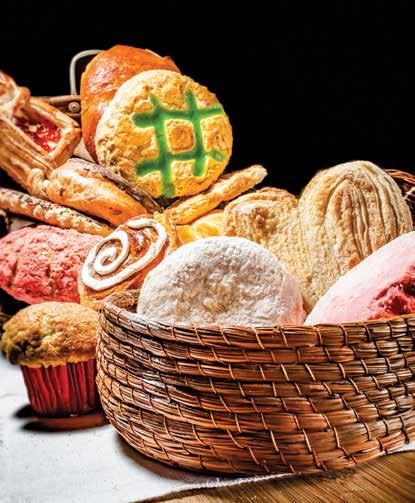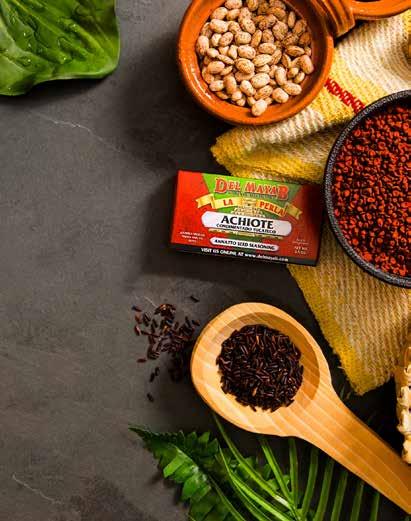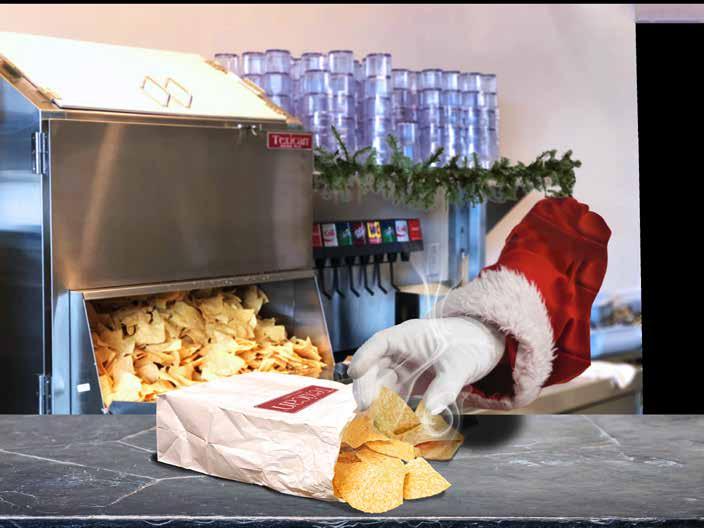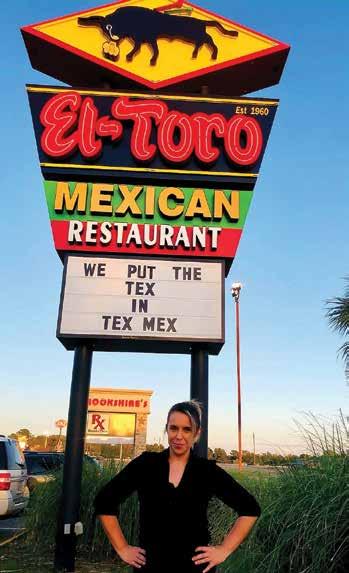
4 minute read
COVER STORY—Hispanic Pastries Sweeten the Season
| BY KATHLEEN FURORE | It isn’t often that you visit a restaurant’s website and find information touting a cookie front and center.
But that’s just what happens on the home page of Sabores del Sur, a South American restaurant in Walnut Creek, California. Click on sabordelsursf.com, and these are the first words you’ll see:
“Savor South America…Walnut Creek’s First South American Restaurant…Home of ‘The Best Cookie on Earth”
The cookie being touted? Chef/owner Guisell Osorio’s alfajores, described as “delicate
shortbread cookies filled with creamy dulce de leche caramel and dusted in white powdered sugar.”
Osorio learned to make the cookies that locally published Diablo Magazine crowned “The Best Cookie on Earth” and 7x7 Magazine called one of the “50 Treats to Eat in SF Before You Die” from her grandma while growing up in Chile. In 2004, when she opened the restaurant—the first South American restaurant and catering company in Walnut Creek—she knew the alfajores would be a great addition to the menu.
“In order to eat what I craved, I had to make everything myself,” Guisell recalls on saboresdelsur.com. “I wanted empanadas and alfajores and couldn’t find anything like what we ate at home.”
A SWEET HISTORY The origin of the alfajore dates to the 8th Century, when cooks in the Middle East made the alajú —believed to have been made by rolling dried fruit preserves in dough then rolling the pastry in sugar or nuts, according to information from Alfa Alfajores Bakery in San Diego.
“When the Moors traveled from the Middle East to occupy Spain, they brought this cookie with them and soon Spaniards

started making their own version: a cylindrical cookie covered in almonds or powdered sugar that they called an alfajor,” a blog post at alfajoresbakery.com explains. “Soon, people around South America were creating their own versions, each region developing an adaptation of its own. This involved replacing the nuts and fruit of the Spanish version with fillings like dulce de leche and marmalade. They also thickened the dough to make shortbread-style cookies and started dipping the sandwich cookies in chocolate.”
Alfajores aren’t the purview of South American cuisine alone. As Mexican food expert and el Restaurante contributing writer Karen Graber notes, alfajores de piña is a well-known regional sweet in Colima along Mexico’s Pacific coast.
Conchas—a traditional Mexican pan dulce named for their round shape and striped, seashell-like shape—is another popular sweet Hispanic bakeries and restaurants offer. The sweet bread—which traces its history to pre-colonial times— consists of a sweetened bread roll and a crunchy, cookie dough-like topping made of sugar, butter and flour that is often flavored

and tinted with food coloring, giving the concha its distinctive look. It is a popular item, too: As a July 2020 story at eater.com notes, “There are up to 2,000 varieties of pan dulces, but the quintessential one is the concha.”
Even churros—which have become almost ubiquitous as desserts and snacks at restaurants and food stands— have an interesting, albeit uncertain, history. One story has it that Portugese travelers brought the concept to Europe from China, where they’d been introduced to a churro-like pastry called youtiau. The new pastry eventually was introduced to Spain, where it was modified to have the dough extruded through a star-shaped nozzle rather than pulled. Another story says churros were introduced to South America during the Spanish Inquisition in the 1500s, and still another posits that Spanish shepherds made churros as a substitute for fresh baked goods.
Whatever format they take, Hispanic pastries can sweeten your menu and bring a touch of Latin tradition to your customers—during the holidays and beyond.

See recipe for Alfajores on page 63.
Marketing Sweets for the Holiday Season

The holiday season this year will be unlike any other you and your customers have seen. With celebrations either canceled or substantially limited in size, the opportunity to host large parties in your restaurant or to cater big events likely will be lost…and that means coming up with creative ideas to boost sales during what is usually a busy season will be key. Ofering Hispanic sweets in various formats is one idea to consider.
Be creative! Cut out cookies for alfajores in star, gingerbread and Christmas tree shapes; tint conchas in holiday colors; twist churros into candy canes sprinkled with sugar.
Create holiday gift boxes or bags flled with alfajores, conchas, and/or churros and other Hispanic pastries—maybe accompanied by a recipe. Ofer them as stand-alone gifts, or as part of a combination Gift Card + Sweets option.

Work with local grocery stores to see if they’ll carry your pastries. Sabores del Sur’s alfajores, for example, are available at selected Whole Foods locations in the Bay area.
Design take-and-bake kits for your customers.
No time to bake? Consider partnering with a local panaderia to source a selection of cookies and pan dulces for your menu.










